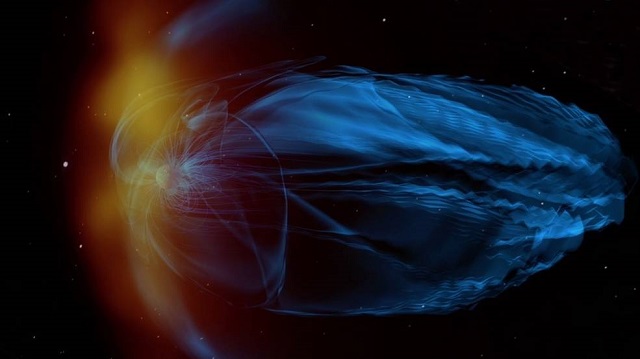
Our sun has entered middle age and will become hotter and hotter over time. After about 5 billion years, it will become a red giant star and finally end its life as a white dwarf. But we still don’t know much about the early history of the sun, and we don’t know which properties contribute to the formation of life on the earth. Recently, astronomers have studied a nearby star κ1 Cetus. It looks like a young sun and may help us understand the sun. The face of the past.
We can’t go back in time to see what the sun experienced when we were young, so the best way to understand the early history of the sun is to look for young stars that are very similar in size and composition to the sun. The yellow dwarf star κ1 Ceti (kappa-1 Ceti) is A good goal.
Scientists have been studying this star since the 1940s. It is about 30 light-years away from us (on an astronomical scale, this distance is like a neighbor living in the next street). It has a mass equivalent to the sun and a radius of about 95%. , The metal abundance is also very similar to the sun, but the age is estimated to be only 600 million years old, just like a young sun.
In a new study, scientists tried to combine various observational data of κ1 Cetus with solar evolution models, including Hubble Space Telescope, Transiting Exoplanet Survey Satellite, Neutron Star Internal Composition Probe (NICER), XMM-Newton Satellite and other (XMM-Newton) data are used to predict the behavior of the sun at a similar age.
Just like children who just started exploring the world, toddler stars are also known for their highly active and high-energy eruptions. According to the model, researchers found that the young sun’s rotation speed is three times faster than it is now, and its magnetic field is also stronger. , And emit more flares and high-energy particles, producing hotter and more violent stellar winds.

▲ Schematic diagram of the coronal mass ejection from the young sun hitting the earth.
Since this time point was when life first appeared on the earth, if the sun was more violent and the earth’s magnetic field was weaker at that time, the coronal mass ejection from the young sun would expose the earth to more energetic particles than today, and scientists would It is even more curious how life was born, and perhaps the high-energy particles that we shun now can help the formation of complex organic molecules on the earth.
This will help astronomers understand which objects to target when looking for alien life, and perhaps confirm which new planets outside the solar system can be settled by humans (if they can get out). The new paper was published in The Astrophysical Journal.
(Image source: NASA)


